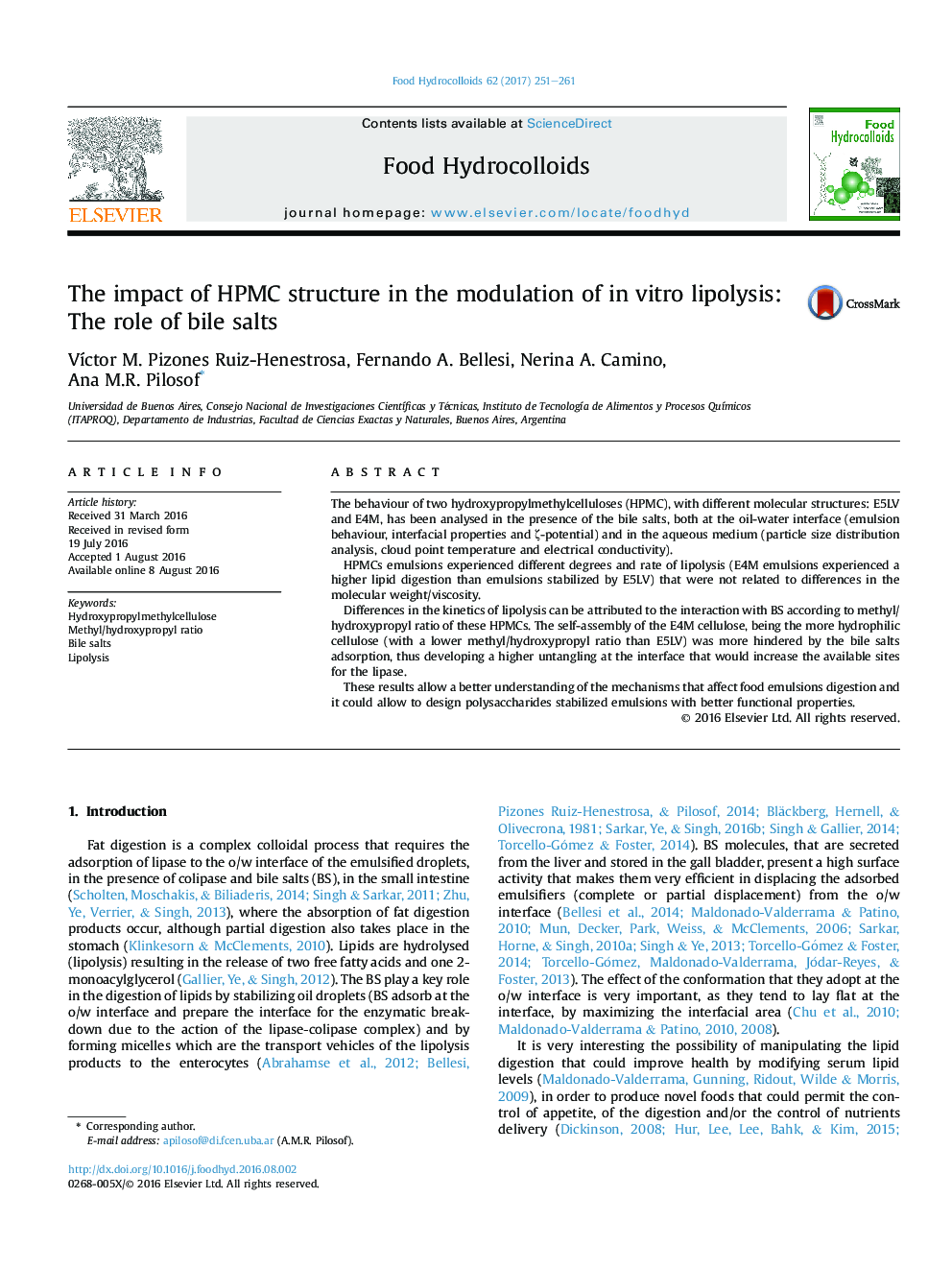| Article ID | Journal | Published Year | Pages | File Type |
|---|---|---|---|---|
| 604020 | Food Hydrocolloids | 2017 | 11 Pages |
•Viscosity of HPMC did not affect the Kinetics of lipolysis.•Kinetic of lipolysis depends on methyl/hydroxypropyl ratio of HPMC emulsions.•Kinetic of lipolysis depends on the interaction of HPMC with bile salts (BS).•The more hydrophilic HPMC enhanced lipase action due to interaction with BS.
The behaviour of two hydroxypropylmethylcelluloses (HPMC), with different molecular structures: E5LV and E4M, has been analysed in the presence of the bile salts, both at the oil-water interface (emulsion behaviour, interfacial properties and ζ-potential) and in the aqueous medium (particle size distribution analysis, cloud point temperature and electrical conductivity).HPMCs emulsions experienced different degrees and rate of lipolysis (E4M emulsions experienced a higher lipid digestion than emulsions stabilized by E5LV) that were not related to differences in the molecular weight/viscosity.Differences in the kinetics of lipolysis can be attributed to the interaction with BS according to methyl/hydroxypropyl ratio of these HPMCs. The self-assembly of the E4M cellulose, being the more hydrophilic cellulose (with a lower methyl/hydroxypropyl ratio than E5LV) was more hindered by the bile salts adsorption, thus developing a higher untangling at the interface that would increase the available sites for the lipase.These results allow a better understanding of the mechanisms that affect food emulsions digestion and it could allow to design polysaccharides stabilized emulsions with better functional properties.
Graphical abstractFigure optionsDownload full-size imageDownload as PowerPoint slide
